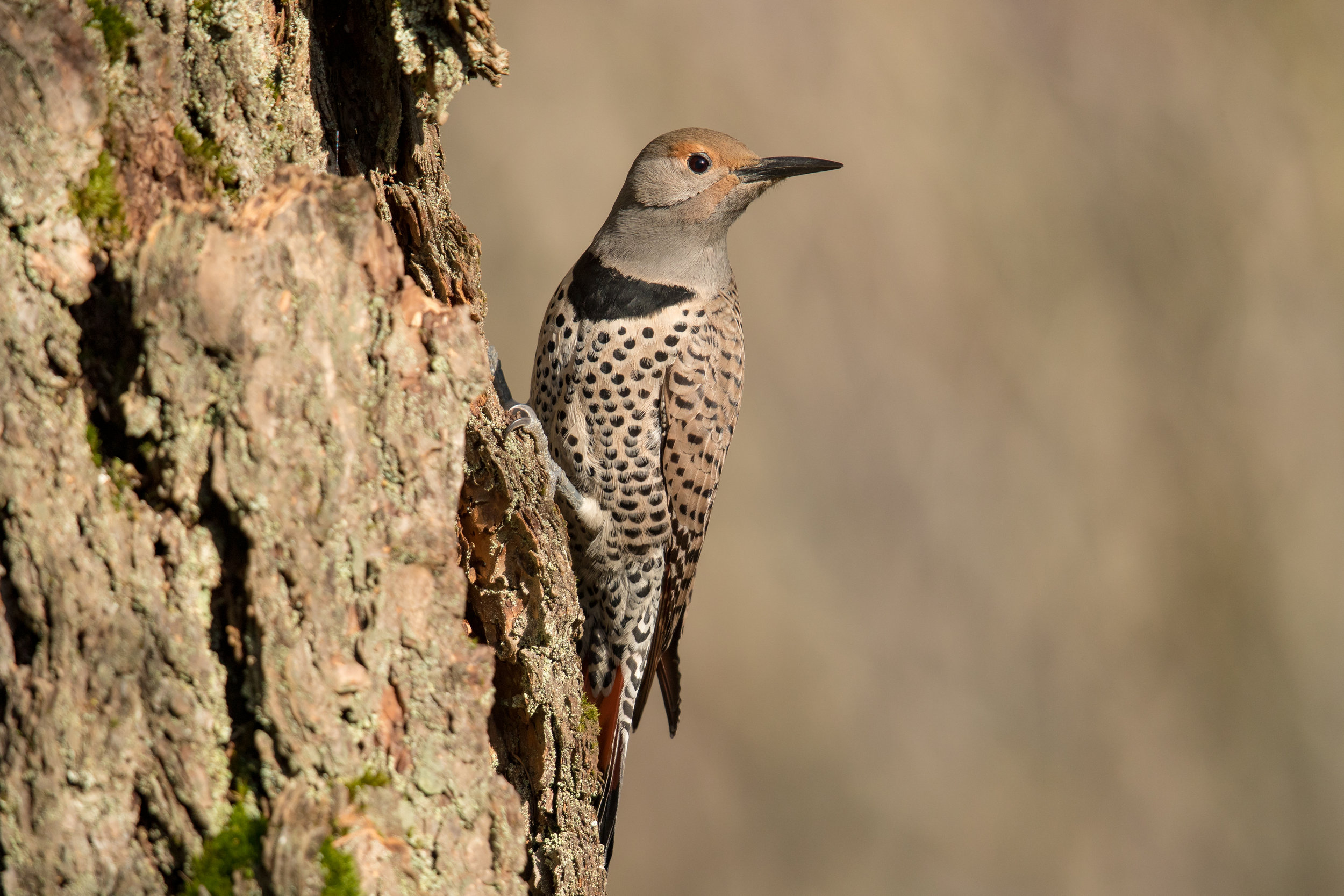Bird of the Month: Northern Flicker
By Hugh Jennings
PC: Mick Thompson (Northern Flicker)
Scientific Name: Colaptes auratus
Length 12-14" long
AOU Band code NOFL
The Northern Flicker (NOFL) varies from 12-14" in length. All forms of the NOFL are barred black and brown above with a white rump patch. The underparts are buff-white with black spotting, and all have a broad black necklace. The red-shafted form is the common sub-species seen in our area. It has salmon coloring in wings and undertail seen in flight. The crown is brown and the male has a red mustache, but no nape patch.
The yellow-shafted form common in the east has yellow in the wings and undertail seen in flight. The crown is gray with a red nape patch. The male has a black mustache. There are also intergrades which combine features of both forms.
The flicker has a wik-wik-wik ringing call and a loud kleer! call note. The NOFL is widespread in all habitats that provide adequate nesting sites, preferring spruce forests, parks, suburban trees, and cactus in deserts. Unlike most of our woodpeckers, it is basically a ground-feeding bird whose main diet is ants. It also catches insects in air and eats fruit, berries and seeds. It will come to bird feeders.
In spring the males arrive in nesting territories a few days ahead of the females. Their arrival is announced by its loud challenging call and loud drumming on metal roofs or gutters, resonant tree limbs, trunks and utility poles. The NOFL excavates a nest cavity in a tree, post, or cactus. It will also use nest boxes. It is interesting that Bufflehead (duck) depends almost entirely on old nesting holes of flickers or Pileated woodpeckers. The female lays 7-9 white eggs. Incubation period is 11-12 days, and fledging occurs 14-21 days later. They may have two broods in one season.


